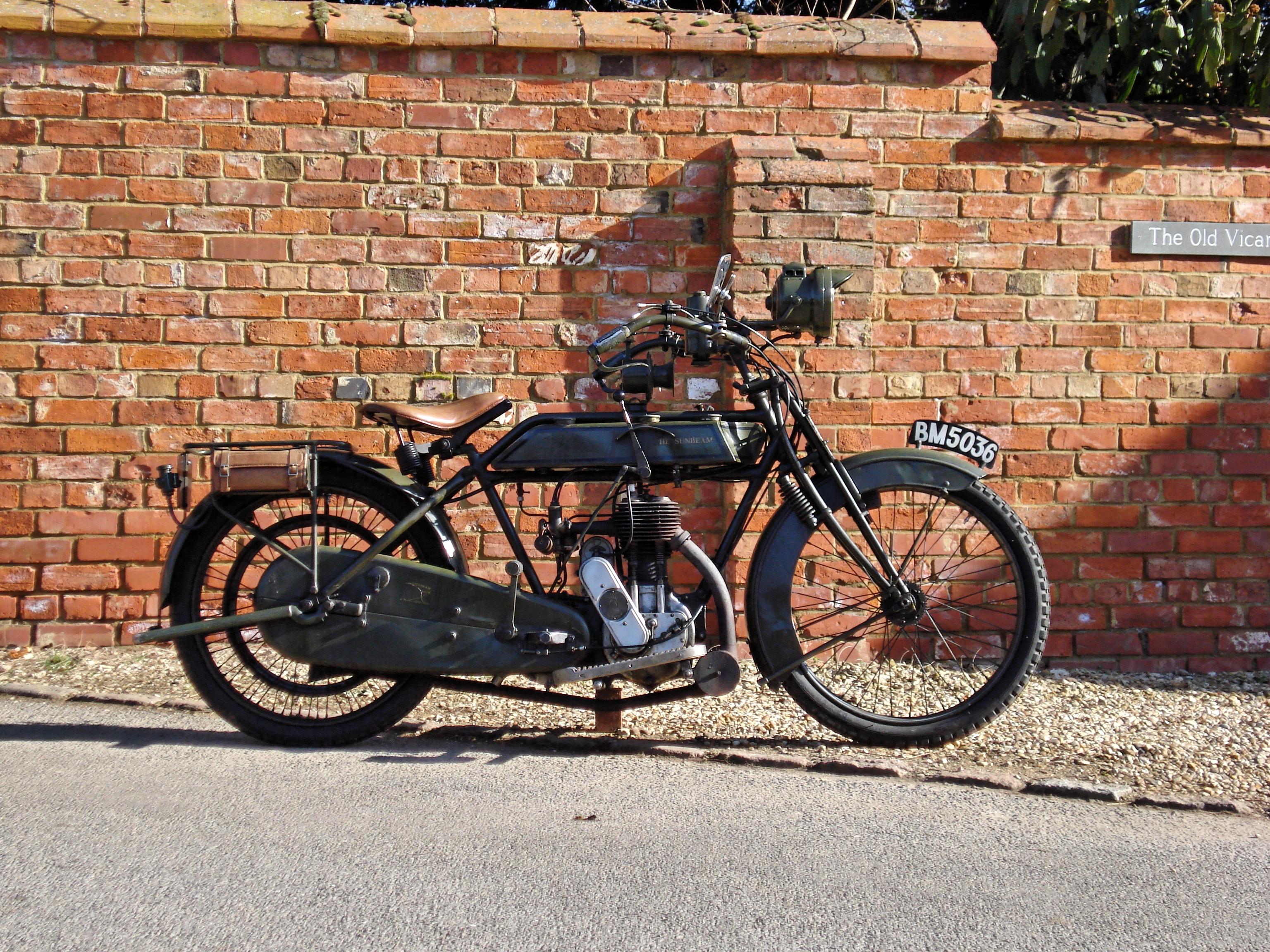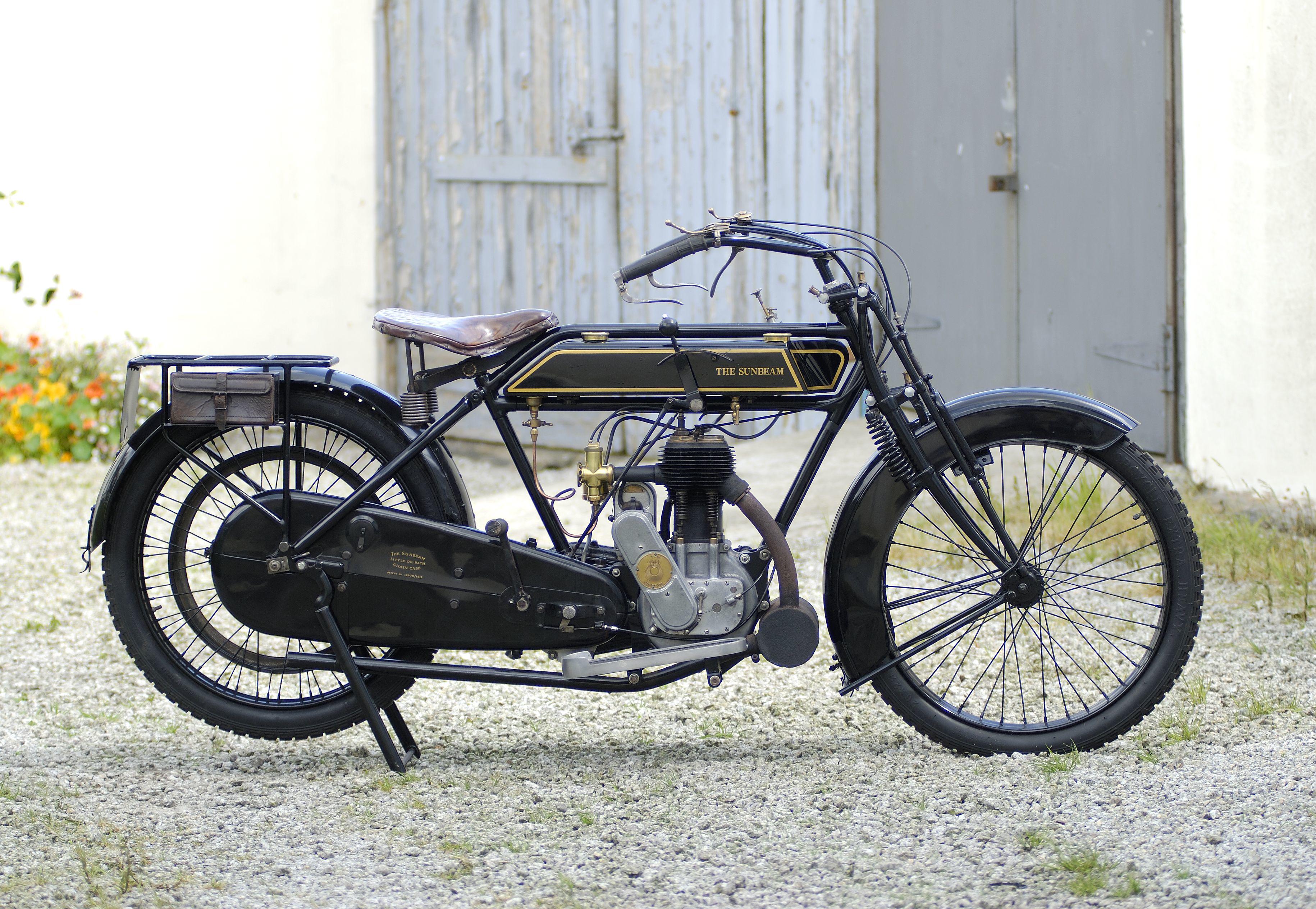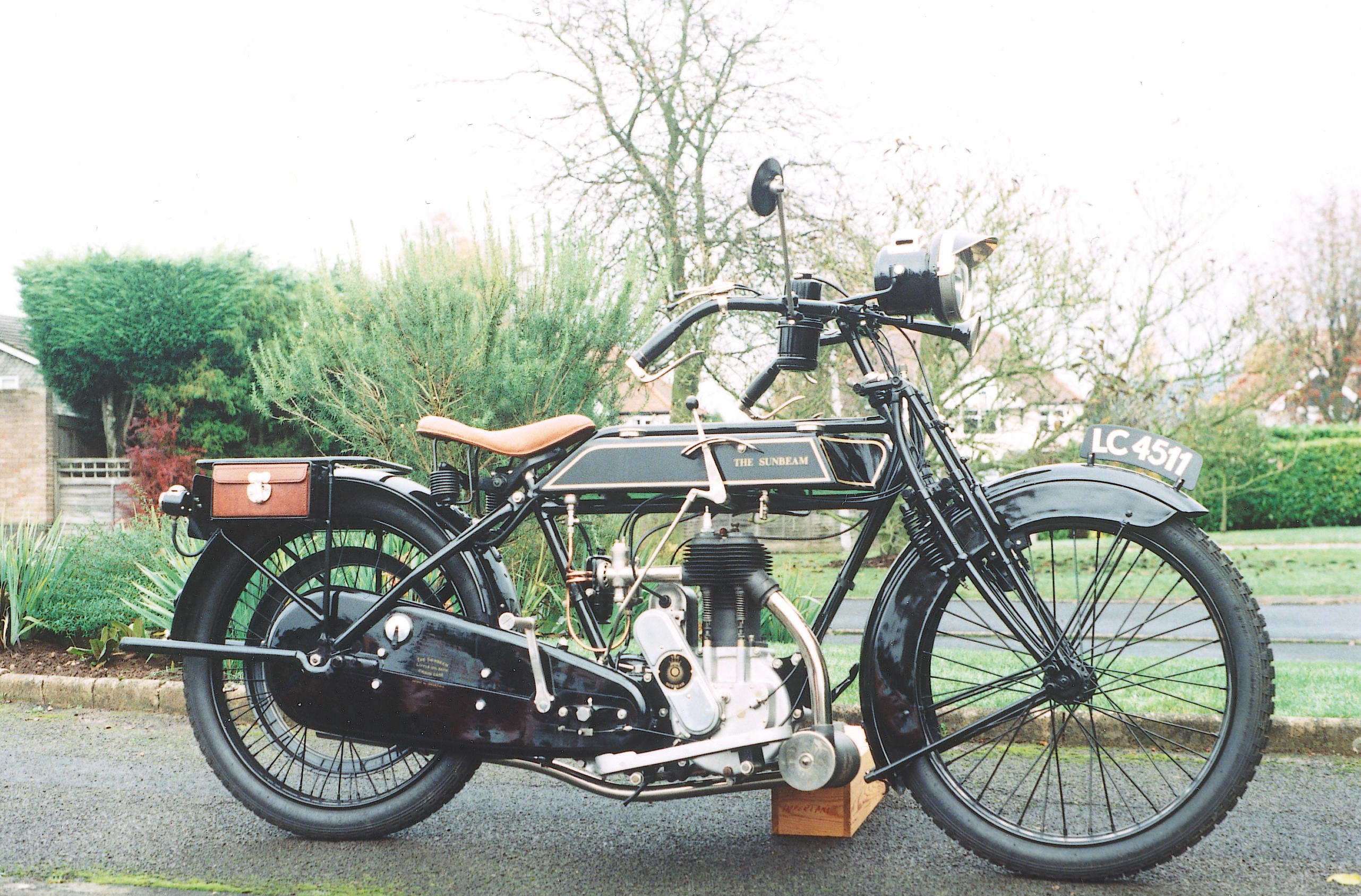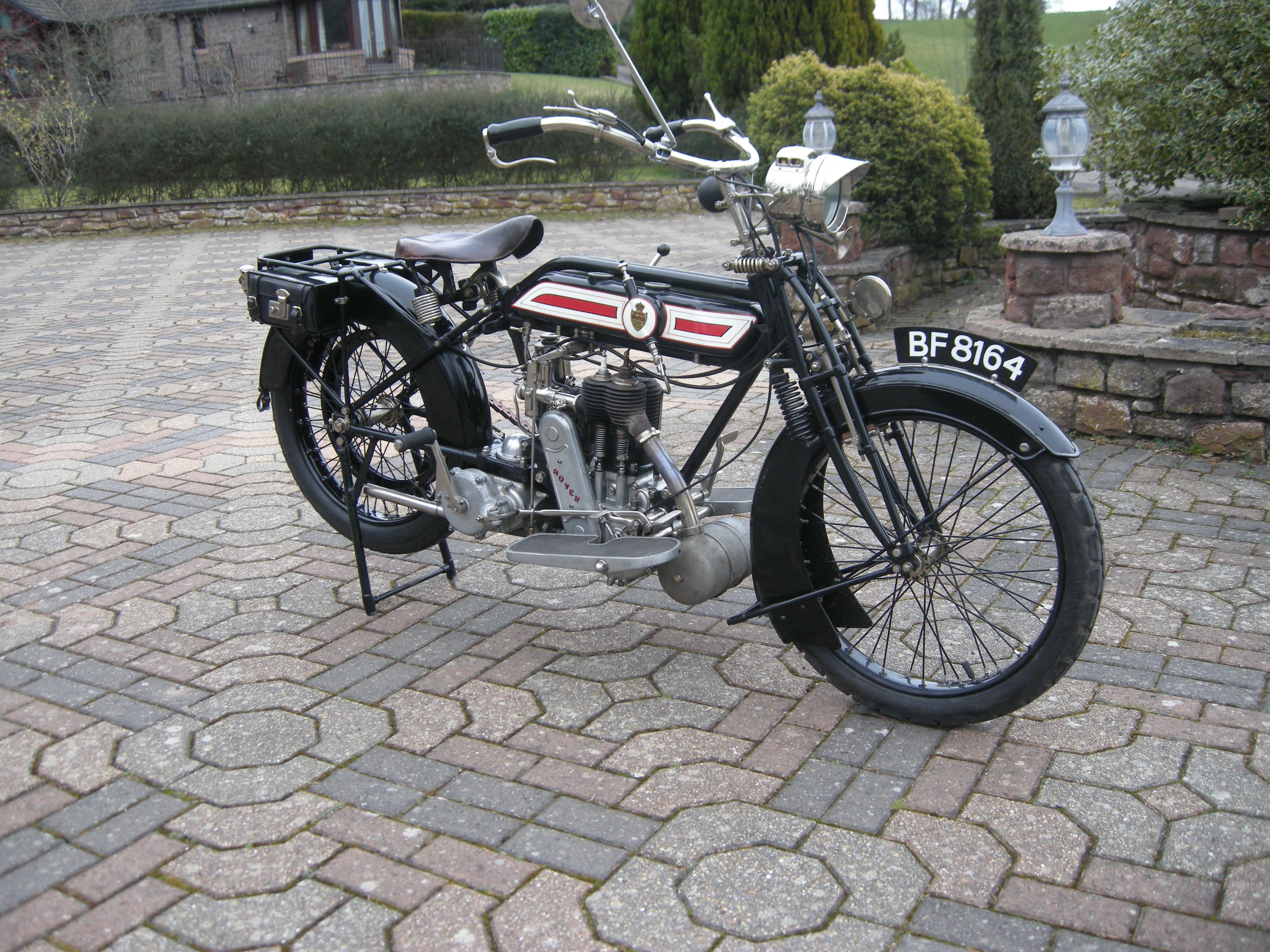Acquired by Brian Verrall in 1998, this Sunbeam military motorcycle previously belonged to collector John Moore and while in his possession featured in The Classic Motor Cycle magazine’s Authentic & Unrestored series (December 1990 issue) in an article penned by noted Sunbeam authority (and Bonhams consultant) Bob Cordon-Champ. Bonhams is grateful to publishers Mortons for allowing us to quote extensively from the article below. ‘Large numbers of motor cycles were used by all armies (during WWI) and despatch riders on the frail machines of those days had a difficult job to do. At the end of the war huge dumps of battered machines were sold to reconditioners who fed them to the motor cycle hungry population, after repainting and reassembling them from the parts available. ‘Thus, although there are quite a few Triumph, P&M and Douglas machines of the period preserved, the WD history of most of them cannot be traced, particularly since the Forces of the period didn't keep the sort of records which enable the later owner of, say, a WD M20 to trace its provenance. ‘To find such an original and well-documented machine as this Sunbeam is, to say the least, unusual. In fact, for it to be a Sunbeam at all is even more unusual, since most of that company's production was for the Allies rather than our forces. The Imperial Russian Army ordered 1,450 Sunbeams, amongst other makes, most being delivered via Archangel until the Revolution prompted an embargo, after which halted machines were sold to other armies. France had up to 1,000 4hp belt-drive solos, only a few of which have survived, and Italy asked for 500 3½hp models, the balance of which order was cancelled in 1918. ‘Most of the war-surplus Sunbeams seem to have been bought back by the factory for rebuilding - nine were for sale at Kempton Park in 1919 at £10 each - and this, no doubt, explains why so many ‘civilian’ Sunbeams of the post-war period have the GS (General Service) engine prefix of an army machine. ‘Although some civilian-style 3½hp bikes were used by the British Army, the largest holding of Sunbeams ‘over here’ was by the Royal Navy - always buyers of the best - and their flying arm, the Royal Naval Air Service who promptly sold on three to the US Navy for use at Strathpether. ‘In those days the RNAS did not fly from aircraft carriers, but instead was as fully committed to air warfare on the Western Front as the better known Royal Flying Corps. In 1915 the RNAS ordered the 3½hp Sunbeam as ‘their’ machine. 'Theirs' differed from the civilian models in being painted drab green - over the nickel plate - with black tank lining and green handlebar grips. They were fitted with a three-compartment fuel tank, one compartment being for oil, one for petrol and one for paraffin. ‘The latter fuel, mazout in French, on which the low-compression engine would run well once warmed up on petrol, was obtainable all over the Western Front, being used for household lighting and heating as well as by the armies.’ It is at this point that the history of ‘BL 5072’, as reported in The Classic Motor Cycle, begins to unravel. The Sunbeam was sold in 1961 to John Moore of Tilehurst in Berkshire, allegedly by local resident Lt Colonel G Dawes. ‘Dawes’ claimed to have seized the machine, which had been intended for the RNAS, in 1915 while he was commanding the Royal Flying Corps’ No. 11 Squadron in France, and said that he had owned it ever since. The Colonel is supposed to have been shot down over Ypres in 1918, losing part of a leg, and was pensioned off, so the story went, in 1919. Returning to farming, he obtained a civilian number – ‘BL 5072’ - for the Sunbeam and used it until it was ‘retired’ in 1921 in favour of an Argyll car. Forty years later, in 1961, Colonel Dawes, by then 75 years old, is said to have sold the machine to John Moore George William Patrick Dawes was an historical figure; indeed, he played an important role in the development of military aviation in Britain. A career
Acquired by Brian Verrall in 1998, this Sunbeam military motorcycle previously belonged to collector John Moore and while in his possession featured in The Classic Motor Cycle magazine’s Authentic & Unrestored series (December 1990 issue) in an article penned by noted Sunbeam authority (and Bonhams consultant) Bob Cordon-Champ. Bonhams is grateful to publishers Mortons for allowing us to quote extensively from the article below. ‘Large numbers of motor cycles were used by all armies (during WWI) and despatch riders on the frail machines of those days had a difficult job to do. At the end of the war huge dumps of battered machines were sold to reconditioners who fed them to the motor cycle hungry population, after repainting and reassembling them from the parts available. ‘Thus, although there are quite a few Triumph, P&M and Douglas machines of the period preserved, the WD history of most of them cannot be traced, particularly since the Forces of the period didn't keep the sort of records which enable the later owner of, say, a WD M20 to trace its provenance. ‘To find such an original and well-documented machine as this Sunbeam is, to say the least, unusual. In fact, for it to be a Sunbeam at all is even more unusual, since most of that company's production was for the Allies rather than our forces. The Imperial Russian Army ordered 1,450 Sunbeams, amongst other makes, most being delivered via Archangel until the Revolution prompted an embargo, after which halted machines were sold to other armies. France had up to 1,000 4hp belt-drive solos, only a few of which have survived, and Italy asked for 500 3½hp models, the balance of which order was cancelled in 1918. ‘Most of the war-surplus Sunbeams seem to have been bought back by the factory for rebuilding - nine were for sale at Kempton Park in 1919 at £10 each - and this, no doubt, explains why so many ‘civilian’ Sunbeams of the post-war period have the GS (General Service) engine prefix of an army machine. ‘Although some civilian-style 3½hp bikes were used by the British Army, the largest holding of Sunbeams ‘over here’ was by the Royal Navy - always buyers of the best - and their flying arm, the Royal Naval Air Service who promptly sold on three to the US Navy for use at Strathpether. ‘In those days the RNAS did not fly from aircraft carriers, but instead was as fully committed to air warfare on the Western Front as the better known Royal Flying Corps. In 1915 the RNAS ordered the 3½hp Sunbeam as ‘their’ machine. 'Theirs' differed from the civilian models in being painted drab green - over the nickel plate - with black tank lining and green handlebar grips. They were fitted with a three-compartment fuel tank, one compartment being for oil, one for petrol and one for paraffin. ‘The latter fuel, mazout in French, on which the low-compression engine would run well once warmed up on petrol, was obtainable all over the Western Front, being used for household lighting and heating as well as by the armies.’ It is at this point that the history of ‘BL 5072’, as reported in The Classic Motor Cycle, begins to unravel. The Sunbeam was sold in 1961 to John Moore of Tilehurst in Berkshire, allegedly by local resident Lt Colonel G Dawes. ‘Dawes’ claimed to have seized the machine, which had been intended for the RNAS, in 1915 while he was commanding the Royal Flying Corps’ No. 11 Squadron in France, and said that he had owned it ever since. The Colonel is supposed to have been shot down over Ypres in 1918, losing part of a leg, and was pensioned off, so the story went, in 1919. Returning to farming, he obtained a civilian number – ‘BL 5072’ - for the Sunbeam and used it until it was ‘retired’ in 1921 in favour of an Argyll car. Forty years later, in 1961, Colonel Dawes, by then 75 years old, is said to have sold the machine to John Moore George William Patrick Dawes was an historical figure; indeed, he played an important role in the development of military aviation in Britain. A career









Testen Sie LotSearch und seine Premium-Features 7 Tage - ohne Kosten!
Lassen Sie sich automatisch über neue Objekte in kommenden Auktionen benachrichtigen.
Suchauftrag anlegen